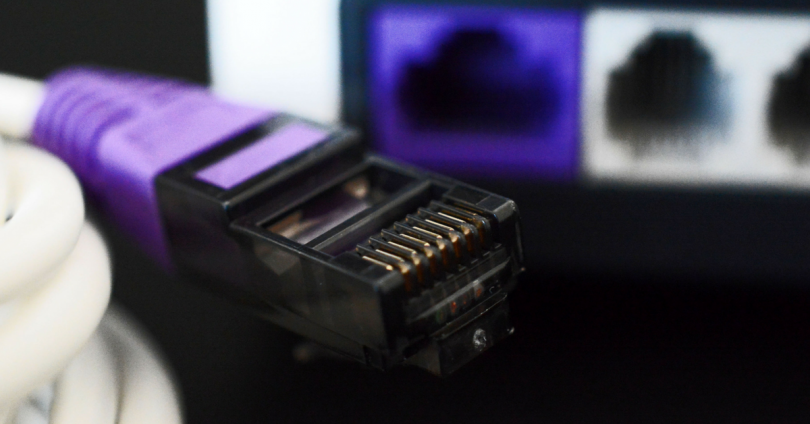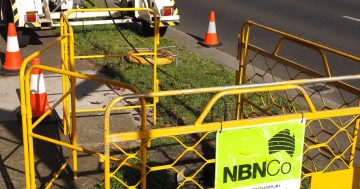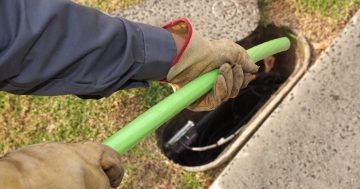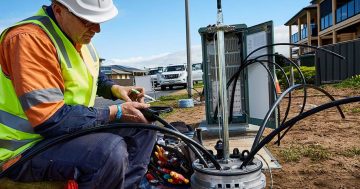
The National Broadband Network (NBN) had the potential to revolutionise Australia’s internet infrastructure.
Fast and reliable broadband is vital to the way we will provide health services, deliver a world class education, do business, deliver smart infrastructure and build a strong and growing economy.
That is why my Federal Labor colleague, Gai Brodtmann MP has run a vigorous campaign to bring the NBN to Canberra, petitioning the Federal Government and asking members of the community to send in their speeds, advocating on behalf of suburbs that are still stuck with ADSL.
I have campaigned with Gai on the NBN because it is also one of the biggest issues in my electorate on the Southside. And in just over a months’ time, and after years of delays, the NBN will be switched on in my neighbourhood.
At the last Federal election Labor committed to roll out Fibre to the Home (FFTH) in new premises, reflecting Labor’s longstanding commitment in establishing the National Broadband Network to deliver fast and reliable broadband.
Unfortunately Labor lost the Federal election, and what we have been left with under two terms of a Liberal Government is the slow roll out of a second grade network of Fibre to the Node (FTTN). FTTN uses the old and unreliable copper network to connect homes, rather than connecting the fibre directly.
Despite the Coalition’s downgrades to the NBN to FTTN, I was very optimistic about the benefits of any small improvement to internet speed. However, as my suburb’s NBN connection date in September becomes closer, I am now asking myself whether I will in fact I take up the NBN.
For a start, the cost is significantly more for faster speeds. The price of NBN is $99.99 a month for limitless broadband up to 100Mbps on iiNet.
The competitor is the existing TransACT VDSL 2 fibre network which is now owned by iiNet. Both VDSL2 and the NBN are both FFTN ( in established neighbourhoods).
iiNet retails the VDSL 2 service at $79.95 per month for unlimited. This is significantly cheaper than the NBN option and my experience has been that it is fast and reliable.
I would be prepared to pay for faster broadband. However, even with a connection speed of up to 100mbps there is no guarantee that the NBN will be any faster than the VDSL 2 network which provides speeds up to 80Mbps download /20Mbps upload.
The speed of the NBN will depend significantly on how far people are away from the node, and no one can know for sure what speed they will achieve until they are connected.
As if they were listening to my internal deliberations on this issue, my internet service provider (ISP), iiNet sent through a very handy email this week:
‘You’ve probably been hearing a lot about the NBN™ lately, so we thought we’d help clear a few things up.
That’s because our VDSL2 network is already delivering reliable, high-speed internet with speeds of up to 80Mbps available.
The NBN™ will not be replacing the network which powers your current VDSL2 broadband service.
This means that you can keep your current VDSL2 broadband for as long as you’d like. You don’t have to switch to the NBN™.’
My reading of this email is that iiNet is concerned about their VDSL 2 customers being let down if they transition to the NBN (FTTN), even if they remain with iiNet as an ISP.
If the NBN cannot deliver speeds faster and more reliable than VDSL2, it would appear to be a seemingly unnecessary and expensive duplication of our existing services that have been around as early as 2009 across a large part of Canberra.
Now in fairness, the NBN Co does claim that:
‘FTTN sets us up very well should the demand for faster speeds arise and a move to fibre to the curb (FTTC)– we are very much designing the network with future upgrades in mind’.
I certainly hope that the Federal Government does upgrade the NBN to FFTC in the future, because in short term i’m not yet convinced that moving to NBN (FTTN) as it stands, is a better option than VDSL 2 on speed or price.
Of course, there are many suburbs on the Southside including Gleneagles that do not currently have access to VDSL2. In fact, some suburbs in Tuggeranong have some of the slowest internet speeds in Australia, and for them the new NBN connection will make a huge difference to their lives and businesses.
Nonetheless, it is unfortunate that that the choice is a second grade NBN using the old unreliable Telstra copper network.
So until I’m convinced by the evidence I’ll be sticking with the old TransACT network.
And for those who voted and campaigned for the real NBN – the one that was supposed to connect fibre to the home –there’s only one person to blame, and that’s the former Minister responsible, and now Prime Minister, Malcolm Turnbull.
What’s your experience? Is NBN (FTTN) any faster than your previous VDSL2 connection?

















